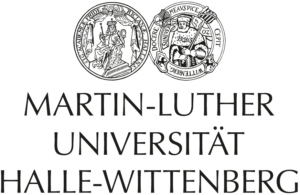Characterization of the multiresponsive Poly(N,N-dimethylaminoethyl methacrylate) by spin probing EPR spectroscopy
The still rising number of publications dealing with stimuli-responsive polymers prove the high interest in such smart materials. Poly(N,N-dimethylaminoethyl methacrylate) (PDMAEMA) exhibits thermo-, pH- and ionic strength responsive behavior in aqueous solutions, being a multiresponsive homopolymer [1]. The goal of this study is to under- stand, how the pH and ionic strength affect the thermoresponsivity of PDMAEMA.
As main method the continuous wave electron paramagnetic resonance (cw-EPR) spectroscopy is used. Our group showed that this technique enables the detection of even nanoscale inhomogeneities in thermoresponsive polymer systems, using the spin probe approach [2].
The shown data are results of a study on PDMAEMA in aqueous solution using the cw-EPR spectroscopy spin probe approach with different nitroxide radicals of different size and hydrophilicity. To investigate the change in the polymer behavior the mea- surements were done within a defined temperature range, at different pH and with and without the addition of sodium dihydrogenphosphate (SDPH).
References
- Jun Gao, Guangqun Zhai, Yan Song, and Bibiao Jiang. Multidimensionally stimuli-responsive phase transition of aqueous solutions of poly((n,n-dimethylamino)ethyl methacrylate) and poly(n,n- dimethyl-n-(methacryloyl)ethyl ammonium butane sulfonate). Journal of Applied Polymer Science, 107(6):3548–3556, 2007.
- Dennis Kurzbach, Matthias J. N. Junk, and Dariush Hinderberger. Nanoscale inhomogeneities in thermoresponsive polymers. Macromolecular Rapid Communications, 34(2):119–134, 2013.
Location: Leipzig University, Linnestr. 5, SR 218, 04103 Leipzig Date and time: 29.11.2016 at 3.30pm





2 thoughts on “Talk by P. Leube at UL (29th November 2016)”